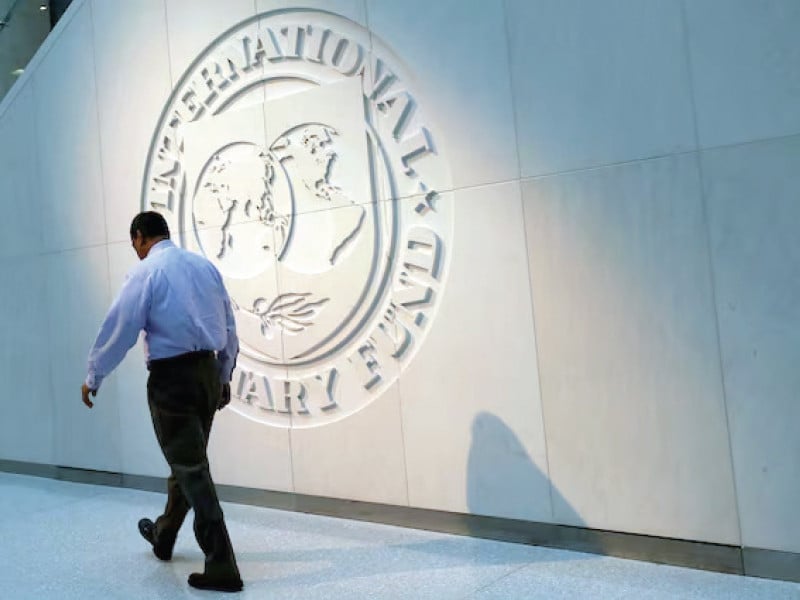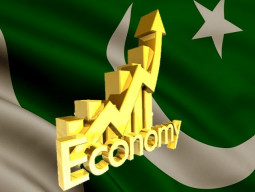
Finally, the International Monetary Fund (IMF) deal has been clinched. After months of uncertainty about mistrust between Pakistan and the IMF with constant engagement, negotiations and conclusions, the authorities have reached an agreement.
The lender is rightly perturbed to see the borrower being constantly unable to repay the previous debt and yet asking for more. But after observing the political willingness and a geopolitically responsible entity, the IMF has again come to the rescue and Pakistan has another shot at achieving sustainable growth and bringing prosperity to 250 million people.
The staff-level agreement (SLA) worth $7 billion has been reached for a 37-month programme to focus primarily on the following:
1) Under fiscal consolidation, tax revenues to grow 1.5% of GDP in FY25 and 3% by FY27 (ambitious)
2) Broadening of the tax base and removing tax exemptions (digitisation is needed)
3) Targeting retail, agriculture and exports for tax growth (exports nabbed, retailers next)
4) Under the National Fiscal Act, provinces to enact changes by January 1, 2025 to share true burden (no other choice)
5) Monetary policy to focus on disinflation and continue high real interest rates (expect 14-15% plus)
6) SBP to focus on a flexible exchange rate without artificially holding the value (not a free float)
7) As part of energy reforms, the government to pay attention on cost reduction, tariff adjustments and ending cross-subsidy (much needed)
8) Fast-tracking the privatisation of SOEs (profitable ones too) to reduce fiscal burden
9) Phasing out of SEZs and agricultural support prices (a very difficult decision)
10) Refraining from guaranteed-return projects under SIFC as well (doable)
Although three years is a relatively smaller time frame to undertake such massive reforms, even 80% success in these would result in restoration of stability in the fiscal area, energy sector and monetary policies.
Unfortunately, policymakers count the entering into the IMF programme as their key success and the enactment thereof. This alone will not bring us at par with Vietnam, Malaysia, India, Indonesia and Bangladesh, let alone the Eastern European countries.
Tremendous efforts are needed to improve business confidence, make industries regionally competitive, grow value-added exports, attract foreign investment in exports and import substitution, set up LNG terminals and pipelines to provide gas, curtail losses in DISCOs and privatise them fully, increase spending on quality education to develop a world-class talent pool and ensure exports grow much faster than imports to increase trade-related growth, revenue, dollars, jobs and value addition.
Global integration with value chains is mandatory in order to put the population bulge into productive use to increase overall GDP levels and create enough jobs to absorb the population growth of 5 million people every year, similar to the population of Johannesburg, Barcelona and Washington.
The signing of the SLA is a done deal, requiring the executive board’s nod. Previously, our lenders – friendly countries – gave commitment to rolling over debts and not pulling the plugs on life support.
Invariably, there is a commitment not to send western US dollars to China owing to geopolitical rifts and that’s fine. Nevertheless, the IMF deal will surely lead to the following positive events:
Increase in SBP’s forex reserves; strong PKR/USD parity; further flow of US dollars from multilaterals – the World Bank, ADB, AIIB and IDB; restoring investor confidence; improvement in Eurobond yields to par value; reduction in interest rate to 14-15% by June 2025; KSE-100 index to touch 5.5-6x PE (110k-120k) by June next year; further flow of US dollars in the domestic debt market; increase in sovereign credit ratings by Moody’s, Fitch and S&P; and easing of fiscal woes after control over SOE losses and circular debt.
The IMF programme will not make us move towards a developed economy. Policymakers need to strengthen their competencies, skillset and vision to move Pakistan forward towards 6-8% GDP growth sustainably.
There is already enough reliance on the talented overseas Pakistanis, who send remittances and sustain the economy. Negligence and complacency should be a criminal offence.
It is high time a nuclear-armed country with tremendous growth potential stops begging lenders for support to garner $6-7 billion every few years.
If only we had multiple tech unicorns and fairly earned billionaires exporting enough from Pakistan, we’d rather be giving aid to other countries seeking investment from us instead of the other way around. Let’s earnestly work – not just pray – to make this the last programme.
The writer is an independent economic analyst

1736930668-0/Untitled-design-(97)1736930668-0-405x300.webp)
1736931444-0/BeFunky-collage-(51)1736931444-0-165x106.webp)

1736929668-0/Untitled-design-(96)1736929668-0-165x106.webp)







1732012115-0/Untitled-design-(14)1732012115-0-270x192.webp)
1736844405-0/Express-Tribune-(2)1736844405-0-270x192.webp)










COMMENTS (5)
Comments are moderated and generally will be posted if they are on-topic and not abusive.
For more information, please see our Comments FAQ